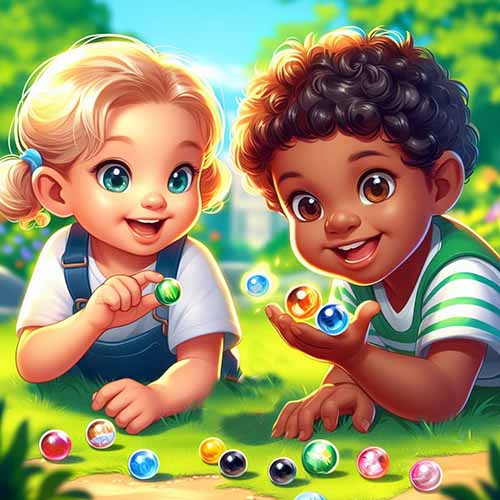Which Group Has More? 🧮 – Comparing Lesson Plan for Pre-K & K
-

Children comparing groups to find which has more - By BING -
Hello, math tutors! Use this simple and interactive comparing numbers lesson plan to teach your pre-kindergarteners the concept of Which Group Has More? As we know, children love counting and find it fun, especially when dealing with colorful objects. So, this lesson plan provides an opportunity to get your kids used to counting and comparing numbers in a fun and playful way.
By so doing, you will get your child used to numbers, leading to mastering other mathematics skills like number sense, more or less, addition, subtraction, etc.
📋 How to teach children to compare using the word ‘more.’
-
Grade Level: Pre-K | Kindergarten
Duration: 20-30 minutes
Objective:
- Students will develop the concept of comparing groups and identify which group has more objects.
- Students will strengthen their understanding of quantity and develop critical thinking skills.
- Build on pre-kindergarteners vocabulary on comparing words and describing skills.
- Help kids show and understand the relationship between two numbers.
-
Previous knowledge:
Ensure that your pre-kindergarteners can already:
- use numbers to represent the quantity of objects
- understand the relationship between numbers and quantity
- Count up to 10
Materials
- Counting objects (e.g., blocks, toys, buttons)
- Grouping tools (e.g., cups, bowls)
- Chart paper or whiteboard
- Marker
- Video: "Which group has more?"
READ THE PROCEDURE
-
Introduce comparing with 'more' lesson
- Begin the lesson by gathering the students together.
- Greet the students with a warm smile and ask them to share what they know about groups, counting, and comparing.
- Ask them about the things they compare everyday
- Provide concrete objects and ask them to count from 1 onwards
- Separate the objects into two groups to observe or count the objects in each group
- Use a happy emoji 😃 to show excitement about counting objects today.
-
Warm-up
- Use emojis like 🔢🔍 to represent counting and comparing and 📣 to represent enthusiastic greetings.
- Provide two groups of countable objects and encourage them to count and share their opinions and reasoning.
- Please encourage them to use the emojis to express their ideas.
-
Video: "Which group has more?"
- Introduce the concept of comparing groups using the video: "Which group has more?"
- Play the video and encourage the students to observe.
- Use emojis like 👀📺 to represent watching and 😄 to show enthusiasm.
-
Group Comparison Activity
- Divide the class into small groups of 3-4 students.
- Distribute counting objects (blocks, toys, buttons, etc.) to each group.
- Provide grouping tools (cups, bowls) and help students group the objects.
- Instruct the students to create two groups of objects and compare them.
- Use emojis like 🧮➕➖ to represent grouping and comparison.
- Circulate among the groups, encouraging discussions and asking questions like "Which group has more? How do you know?"
- Ask them to point to the group with more objects.
-
Whole-Class Discussion
- Bring the students back to the circle or classroom gathering area.
- Use emojis like 💬🗣️ to represent discussion.
- Ask the groups to share their findings and explain their reasoning.
- Record their answers on the chart paper or whiteboard.
- Facilitate a discussion by asking guided questions like "Why do you think this group has more?" or "How can you be sure?"
-
Conclusion
- Summarize the lesson's main points, emphasizing the concept of comparing groups and identifying which group has more.
- Use emojis like 📚✍️ to represent summarizing and 🧠🚀 to encourage critical thinking.
- Please encourage students to continue exploring and comparing groups in their daily lives.
✨ Extension Activities (optional)
- Students can create their own "Which group has more?" scenarios using different objects and invite their classmates to compare them.
- Students can practice comparing groups using online interactive math games or worksheets.
- Students can create simple bar graphs or pictographs to represent their group comparisons visually.
Note: Adjust the timing and activities according to your student's needs and abilities. Use additional emojis based on your teaching style and classroom dynamics.
🌈 Have fun teaching and learning about comparing with 'more'! Remember, you're doing an amazing job, teachers! 🎉 For more math videos and resources, visit our website at https://mathskills4kids.com/. 🌟
Please CLICK THE SHARE BUTTON to allow others to benefit from this content!
